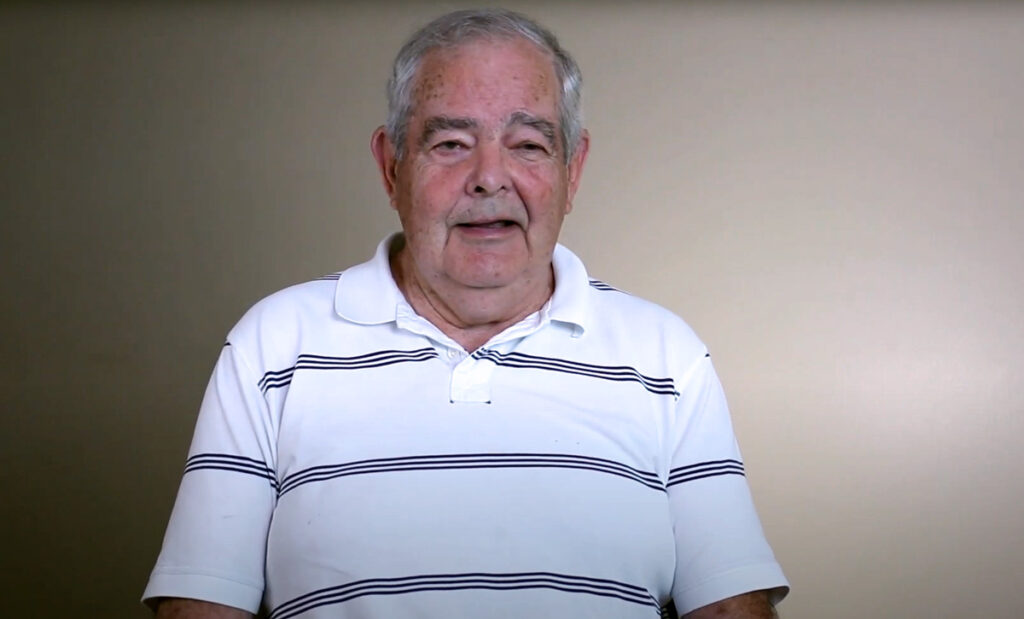
When local farmer Jack Moore had a stroke in April of 2010, he was building a new fence on his property. Suddenly, he couldn’t move and felt himself falling from his ladder. Jack woke hours later in a hospital bed without any recollection of what had happened. His doctors explained that he had suffered a stroke, causing brain tissue to die, leaving him unable to move or talk.
Jack has since regained most of his speech and movement, thanks to quick medical response and stroke care, including months of physical therapy and rehabilitation. He cites speech therapy at Western Missouri Medical Center as a crucial part of his recovery and regained confidence. Jack has also joined a stroke survivors group at WMMC, connecting with fellow survivors for support and to practice speech in a causal, relaxed environment.
“It’s been important to meet people with similar experiences. When I was younger, I never thought I’d have a stroke. I didn’t know anybody who had a stroke,” Jack says. “Then I had one, and then I started meeting this person, and that person who’d all had a stroke.”
Each year, more than 795,000 people in the United States experience a stroke. Quickly recognizing the signs of a stroke is crucial for care and recovery, says Alyssa Masters, Clinic Nurse Coordinator of the Emergency Department and Time Critical Diagnosis RN at Western Missouri Medical Center.
“Strokes can happen to anybody at any time. There are factors that put someone more at risk for a stroke, but they can happen to anybody at any time,” she says. “I could be walking down the street, and suddenly recognize that I’m having a stroke, or I could realize the person next to me is having a stroke. Having the knowledge and resources to identify and treat strokes right here in the community is vital.”
Everyone’s journey through recovery looks different due to how strokes affect the brain and the variety of treatment options available. Most stroke patients will have some type of lasting effect that will require rehab—like Jack, who completed three weeks of inpatient rehab and physical therapy, followed by twice-a-week outpatient sessions here at WMMC.
From his initial stroke care and recovery to his journey through rehabilitation and therapy, Jack is immensely grateful for the care and support available here at WMMC.
“You can’t measure the hospital’s importance to the community. Every time something happens here, it affects the community,” he says. “I’m thankful that we have speech therapy here locally. The hospital is a real boon to that and helpful in many, many ways.”
Know The Signs
The BE FAST acronym helps identify the warning signs of a stroke:
- B – Balance – Sudden onset of dizziness is a big indicator of a stroke. Is the person off balance or leaning heavily to one side? Are they having trouble standing upright or walking?
- E – Eyes – Any sudden change in vision. It could be blurry in one eye or both. Vision can also suddenly appear black or with only a portion of vision affected.
- F – Face – Does one side of the face droop or is it numb? Ask the person to smile. Is the person’s smile uneven? Can they lift their eyebrows evenly?
- A – Arms – Is one arm weak or numb? Ask the person to raise both arms. Does one arm drift downward? Typically, there is weakness on just one side, though it can be both.
- S – Speech – Look for slurred speech or difficulty speaking. It’s natural to stumble over words but with a stroke, it is pretty extreme and noticeable.
- T – Time – Early intervention is important for treatment. Note the time when stroke symptoms first appear. Every minute counts. Call 911 immediately.
Western Missouri Medical Center (WMMC) is a fully-accredited acute care county medical center located in Warrensburg, MO. WMMC prides itself in emergency care, obstetrics, orthopedic and general surgery, family healthcare, internal medicine, outpatient clinics, ambulatory care, rehabilitation services and more. Inpatient services include medical, surgical, intensive, obstetrical, orthopedic, pediatric and skilled nursing care, as well as a wide range of therapeutic and diagnostic outpatient services. This institution is an equal opportunity provider and employer.
